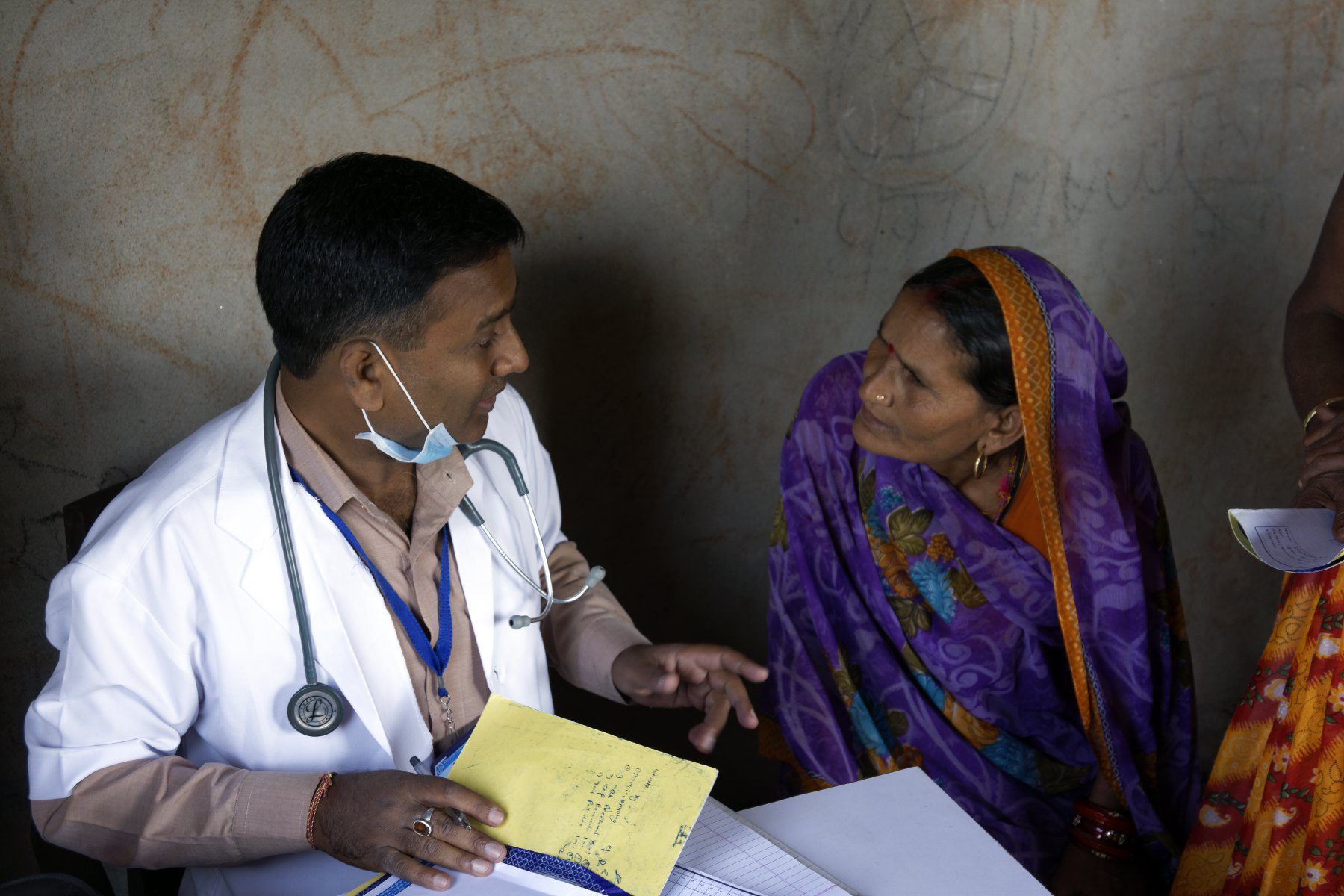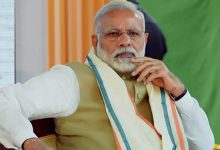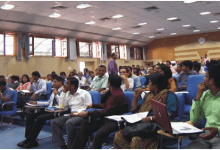The newly proposed insurance-backed national health protection scheme (NHPS) in the budget may protect insurance firms and private healthcare outfits, but not the common man’s health. Here’s an in-depth analysis, for Different Truths.
 Is the government really serious about the newly proposed insurance-backed national health protection scheme (NHPS) in the budget? Probably not. It may protect insurance firms and private healthcare outfits, but not the common man’s health. Only public hospitals, well-equipped public medical centers, dedicated physicians and para-medical staff and affordable medicines can help protect the health of the public. Not insurance companies. Not certainly in India where healthcare facilities are under an acute shortage. Moreover, limited individual health insurance benefit does not cover even a fraction of highly inflated Medicare costs in private hospitals and clinics.
Is the government really serious about the newly proposed insurance-backed national health protection scheme (NHPS) in the budget? Probably not. It may protect insurance firms and private healthcare outfits, but not the common man’s health. Only public hospitals, well-equipped public medical centers, dedicated physicians and para-medical staff and affordable medicines can help protect the health of the public. Not insurance companies. Not certainly in India where healthcare facilities are under an acute shortage. Moreover, limited individual health insurance benefit does not cover even a fraction of highly inflated Medicare costs in private hospitals and clinics.
The country’s current system of health insurance coverage is a joke, if not fraud on healthcare. It is shocking that the government, instead of trying to improve the highly inadequate state healthcare infrastructure on an emergency basis, should fund and trust insurance firms to take care of the suffering public. What the country needs are hundreds of large public hospitals, well-equipped health centres and several lakhs of fresh medical practitioners and paramedics.
The existing public healthcare facilities are crumbling under severe pressure with their supplies far too inadequate compared to demand. Ministers and officials in the health department can see for themselves the plights of the suffering common man if they care to take a visit of the next door AIIMS and Safdarjung Hospitals by Delhi’s Inner Ring Road in the morning. Suffering ordinary citizens are forced to visit private hospitals and clinics and spend beyond their means for an uncertain cure.
This explains why insurance companies and private hospitals came out immediately showering praises on the budget announcement of the proposed national health protection scheme. Large private healthcare providers are happy. “This will be a big boost for us. The current insurance schemes were unviable, but with the increase in cover, I think we will see a growth in our state-sponsored scheme patients,” Suneeta Reddy, MD, Apollo Hospitals Enterprise was quoted to have said. She may be absolutely right. Few insurance schemes in India will cover a Rs. 16-lakh bill for a dengue fever treatment in a private hospital. Health insurance policies do not cover even a cataract operation bill in so-called private hospitals run as trusts to avoid payment of corporate income tax.
For the insured, hospital bills are often inflated by 100 percent or more than the claimed entitlement for a treatment. Assuming that the NHPS becomes a reality, it will certainly mean a big boom for insurance companies and money-shark private healthcare establishments. However, going by the provisioning in the budget to run “the world’s largest government-funded national health programme,” there is little to be excited about the prospect of its easy take-off. Considering that this is the last full budget of the current NDA government before the next Lok Sabha election, the proposal may only serve as a pre-election campaign agenda. Finally, the government may blame states, which are required to share a part of the financial burden, for non-execution of the scheme on a national basis due to non-participation by states.
The NHPS proposes to provide 100 million families with medical coverage of up to Rs 5,00,000 lakh per year for secondary and tertiary care hospitalisation. Insurance companies say the scheme brings under its umbrella 40 per cent of India’s population. The NHPS will replace the Rashtriya Swasthya Bima Yojana (RSBY), which provides an annual coverage of Rs 30,000. The Rs. 5,00,000-insurance cover actually is an upgrade of the coverage. What is not clear at this stage is how the government will fund such a gigantic scheme which is expected to cost anything between Rs. 1,00,000 crore and Rs. 1.5 lakh crore. The NITI Aayog and the Union health ministry indicated that the government’s new flagship scheme was “likely to cost the exchequer anywhere between Rs 100 billion and Rs 120 billion.” The Union government said it would provide 60 percent funds, and the state governments were expected to pool in the remaining 40 percent.
 The government’s calculation was based on the assumption that the premium per family would be between Rs 1,000 and Rs 1,200, though, on the contrary, Rs. 5-lakh annual health insurance coverage for a senior citizen now costs over Rs. 20,000. “We are expecting to cover around 50 percent beneficiaries depending on the state governments’ acceptance of the scheme,” said Alok Kumar, an adviser at NITI Aayog. The state governments, however, are yet to provide their consent for implementing this scheme. Experts believe that states may not agree because of their tight fiscal position and reluctance to replace their own health schemes with NHPS. “We will speak to the state governments,” said NITI Aayog member (health) Vinod Paul.
The government’s calculation was based on the assumption that the premium per family would be between Rs 1,000 and Rs 1,200, though, on the contrary, Rs. 5-lakh annual health insurance coverage for a senior citizen now costs over Rs. 20,000. “We are expecting to cover around 50 percent beneficiaries depending on the state governments’ acceptance of the scheme,” said Alok Kumar, an adviser at NITI Aayog. The state governments, however, are yet to provide their consent for implementing this scheme. Experts believe that states may not agree because of their tight fiscal position and reluctance to replace their own health schemes with NHPS. “We will speak to the state governments,” said NITI Aayog member (health) Vinod Paul.
Few will disagree that the government would have rather done well to spend the money on strengthening its hospitals, health centres, medical and para-medical institutions and nursing colleges across the country. In fact, this union budget has partly provided for such a programme. The decision to have 24 new government medical colleges and hospitals will ensure one medical college for every three parliamentary constituencies or nearly 50 lakh people. Quality healthcare at these centres can surely bring down the pressure on government or municipal-run medical facilities in big cities and district towns. If this programme is implemented well, they will genuinely help serve the nation’s health and boost social security.
“Universal health insurance through private hospitals has not worked for poor anywhere. Biggest beneficiaries are the private hospitals and insurance companies. There is no substitute for public healthcare,” former finance secretary Arvind Mayaram said on a micro-blogging site. Mysteriously, the union budget provides practically no extra sum for the mega health insurance cover programme for the country’s 50 crore people. Contrary to the government’s promise, the share of health allocation as a percentage of GDP is down. The National Health Policy 2017 indicated that health expenditure would increase to 2.5 percent of GDP, but the goal is still far. It is only around 1.2 percent of the GDP right now.
Nantoo Banerjee
©IPA Service
Photos from the Internet
#TheNationalHealthPolicy2017 #GDP #NITIAayog #GovernmentFunded #EmergencyBasis #InsuranceBacked #HealthCareFacilities #Practitioners #Paramedics #IPA #DifferentTruths






 By
By

